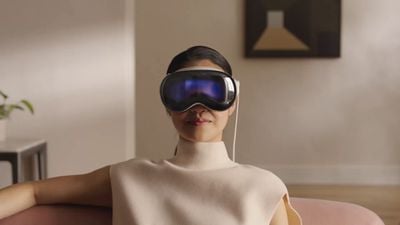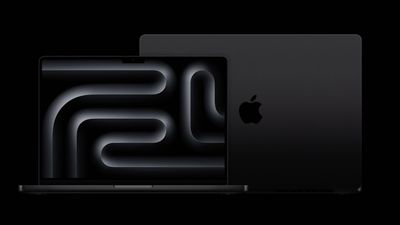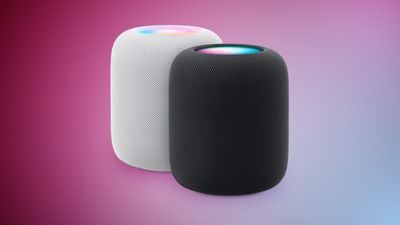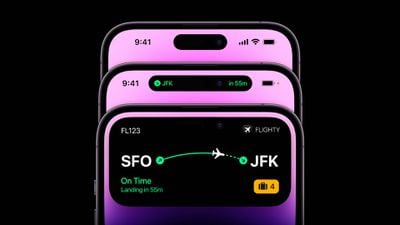Apple plans to announce new products "this week," according to Bloomberg's Mark Gurman.

In his Power On newsletter, Gurman said the products set to be updated this week include the iPad Pro, Vision Pro, and "likely" the base 14-inch MacBook Pro, with all three likely to receive a spec bump with Apple's next-generation M5 chip.
Gurman does not expect Apple to hold an event to announce these products. Instead, there will likely be a series of press releases on the Apple Newsroom website, and there might also be shorter promotional videos for each product on YouTube.
Below, we have recapped rumors about each product.
iPad Pro

The next iPad Pro was already leaked in a pair of unboxing videos out of Russia. The videos confirmed that the device will be equipped with the M5 chip, and an increased minimum of 12GB of RAM, but no major design changes were visible.
There is one minor design change: "iPad Pro" is no longer inscribed on the back of the device.
It was previously rumored that the next iPad Pro models would be equipped with two front cameras, instead of one, making it easy to have video calls in both portrait and landscape orientations. However, there was no evidence of a second front camera in the unboxing videos out of Russia, so it is unclear if this rumor will pan out.
Geekbench 6 results shown in one of the unboxing videos revealed the M5 chip will stick with a 9-core CPU, with three performance cores and six efficiency cores. The results showed the M5 chip will offer up to 12% faster multi-core CPU performance, and up to 36% faster GPU performance, compared to the M4 chip in the current iPad Pro.
Vision Pro

An updated version of the Vision Pro is also expected to be equipped with an M5 chip, although an earlier rumor said the device would receive an M4 chip.
There could also be an R2 chip for improved input processing, but the report said that chip would be manufactured with TSMC's latest 2nm process, and Apple's first chips using that process are not expected to debut until the second half of next year.
Apple is expected to start including a more comfortable "Dual Knit Band" head strap in the box with the updated Vision Pro, and the headset could get a Space Black color option. The device will continue to support Wi-Fi 6, rather than Wi-Fi 6E or Wi-Fi 7, according to FCC documents that were erroneously made available for public viewing.
It is unclear if these changes will be enough for Apple to consider the updated Vision Pro to be a second-generation model. Recent reports have indicated that Apple has suspended development of a truly next-generation Vision Pro, along with a lightweight and lower-cost "Vision Air" model, as it focuses its efforts on smart glasses.
14-inch MacBook Pro

A base 14-inch MacBook Pro with an M5 chip is "ready for launch," according to Gurman.
Last week, AppleInsider reported that a base MacBook Pro with an M5 chip would be released before higher-end models with M5 Pro and M5 Max chips, which are expected to follow in early 2026. Beyond the M5 chip, no significant changes are expected.
Bigger changes to the MacBook Pro are expected with the two-generations-away models, with rumored upgrades including an OLED display, touchscreen capabilities, a thinner design, built-in cellular connectivity, and M6 chips manufactured with TSMC's latest 2nm process, for even greater year-over-year performance gains.
Other Products in Pipeline

The following products are expected to be updated before the end of the year, but it is not clear if Apple will announce any of them this week in particular.
HomePod mini availability is starting to dwindle at select Apple Store locations around the world. For example, the HomePod mini is completely out of stock in all five color options at Apple's flagship Regent Street store in London.
- HomePod mini: S9 chip or newer with support for next year's revamped version of Siri powered by Apple Intelligence, an Apple-designed Wi-Fi chip with Wi-Fi 6E or Wi-Fi 7 support, improved sound quality, a second-generation Ultra Wideband chip, and potentially new color options like Red.
- Apple TV: A faster A17 Pro chip that will support next year's revamped version of Siri powered by Apple Intelligence, and an Apple-designed Wi-Fi chip with Wi-Fi 6E or Wi-Fi 7 support. A built-in FaceTime camera has been rumored for a future Apple TV, but it is unclear if that will arrive with the next model.
- AirTag: Up to 3× longer item tracking range vs. current AirTag, a more tamper-proof speaker, and "very low" battery life alerts.
New models of the Pro Display XDR and Studio Display have also been rumored.








 Note: MacRumors is an affiliate partner with Disney+. When you click a link and make a purchase, we may receive a small payment, which helps us keep the site running.
Note: MacRumors is an affiliate partner with Disney+. When you click a link and make a purchase, we may receive a small payment, which helps us keep the site running.

 Meta Ray-Bans without an in-lens display
Meta Ray-Bans without an in-lens display

 Apple's "Mac Your Calendars" teaser last October
Apple's "Mac Your Calendars" teaser last October


 Note: MacRumors is an affiliate partner with Amazon. When you click a link and make a purchase, we may receive a small payment, which helps us keep the site running.
Note: MacRumors is an affiliate partner with Amazon. When you click a link and make a purchase, we may receive a small payment, which helps us keep the site running.















